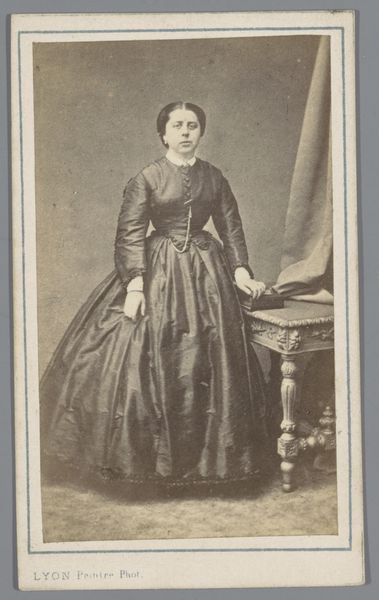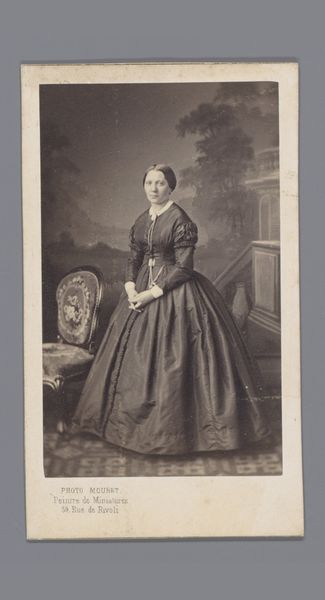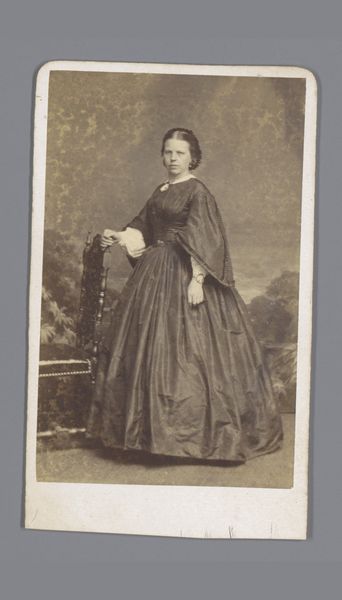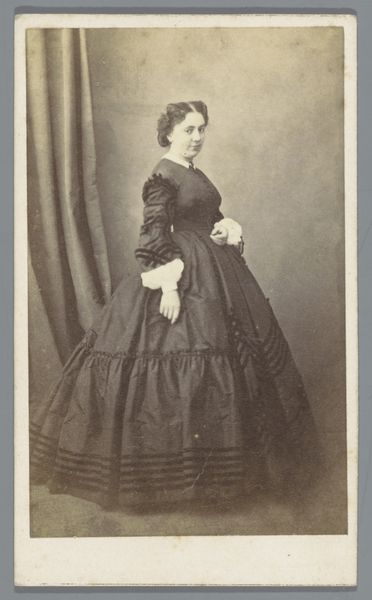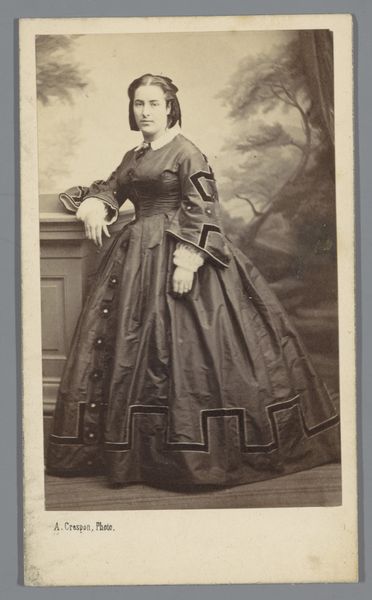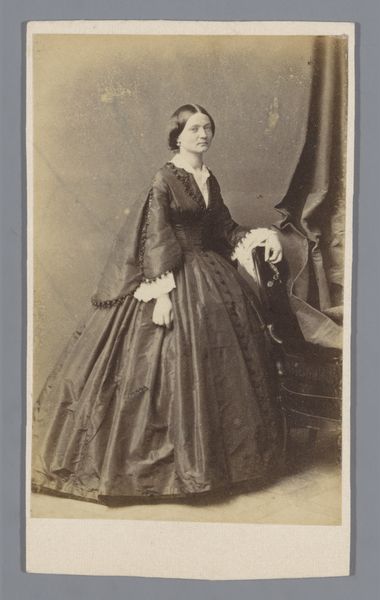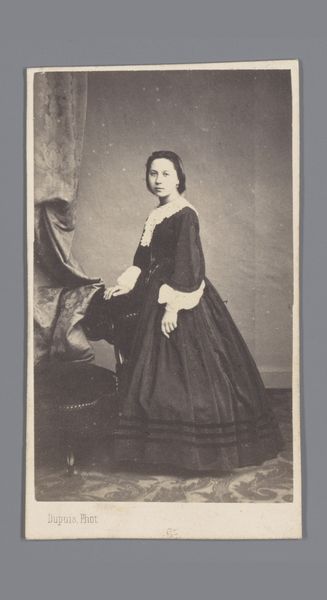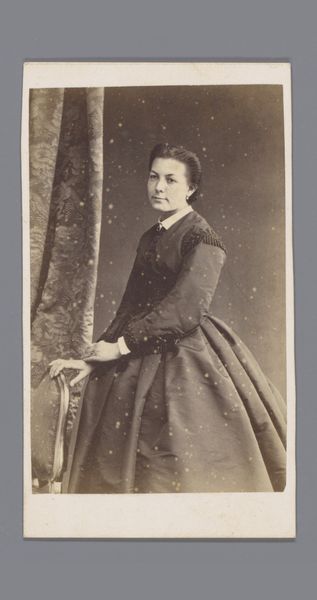
photography, albumen-print
#
portrait
#
photography
#
albumen-print
Dimensions: height 104 mm, width 63 mm
Copyright: Rijks Museum: Open Domain
Curator: Here we have an albumen print portrait by Achille Ernest Mouret, identified as "Portret van een onbekende vrouw bij een stoel," dating from between 1860 and 1888. What strikes you initially? Editor: There’s an austerity to it, a formality. The starkness of the monochromatic image combined with the woman’s solemn expression conveys a very distinct mood. It makes me wonder about the conventions and social pressures informing portraiture at the time. Curator: Exactly. Photography, especially portraiture, was becoming more accessible. Studios emerged, democratizing representation, but it also meant conforming to certain bourgeois ideals and aesthetics. Notice the backdrop, a painted landscape suggesting a connection to nature while maintaining studio artifice. It speaks to the negotiation of identity and representation in a rapidly changing society. Editor: And the dress! Its immense size seems like such a symbol of status and constraint. It reminds me of those restrictive gender roles placed on women, where appearance dictated much about their position in society. This photograph isn’t simply a likeness; it's a cultural artifact. Curator: I agree. And her slight touch on the chair might represent the constraints but, also perhaps, a small attempt at asserting control in this manufactured scene. The chair itself signifies domesticity, womanhood, and the restricted spaces of the home that bourgeois women of this era occupied. Editor: You’re right. Even in its stillness, the image invites questions about female agency. The unknown woman, stiff and almost unsmiling, stares back, as if in quiet protest of what is expected of her. What I see here goes way beyond the technical aspects of an early photograph; there’s social critique embedded within the image. Curator: It is truly fascinating how much we can read into a single image once we begin to explore the historical and social forces that shaped its creation. It opens us up to consider new perspectives in portraiture. Editor: Definitely. It encourages us to rethink assumptions about visibility and representation for those who were under-represented. A powerful testament that sparks ongoing dialogue between past and present.
Comments
No comments
Be the first to comment and join the conversation on the ultimate creative platform.
